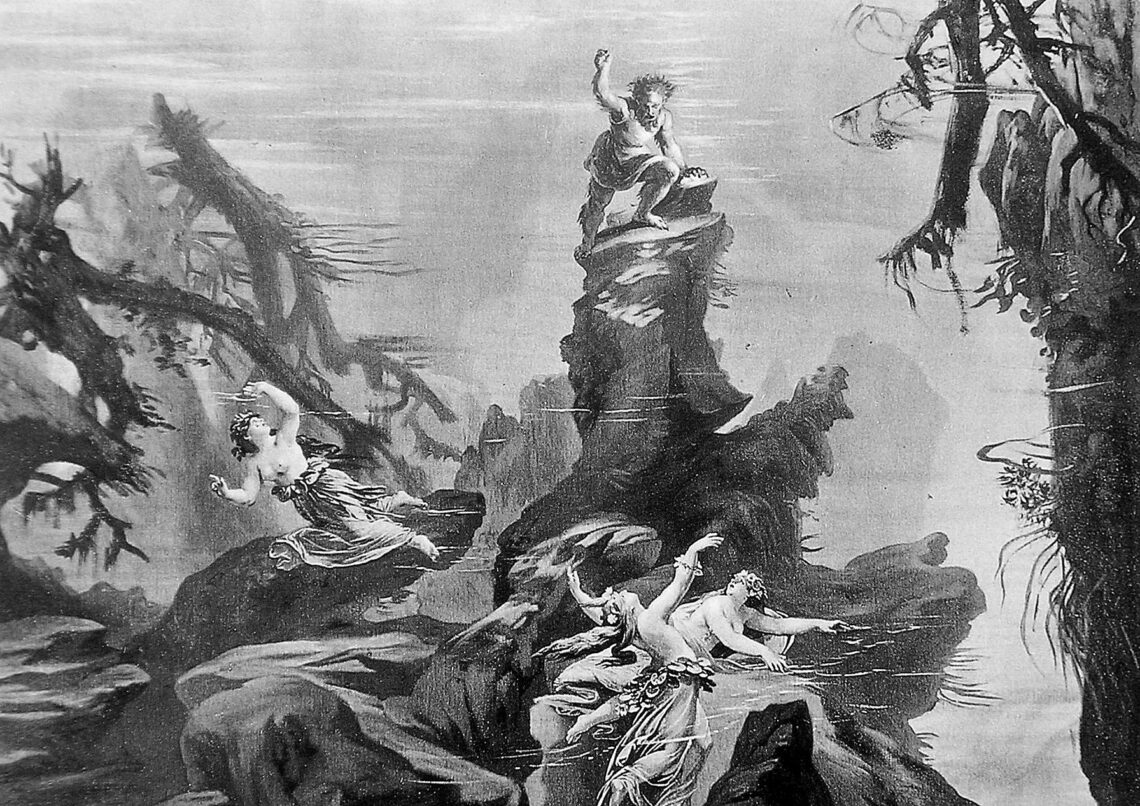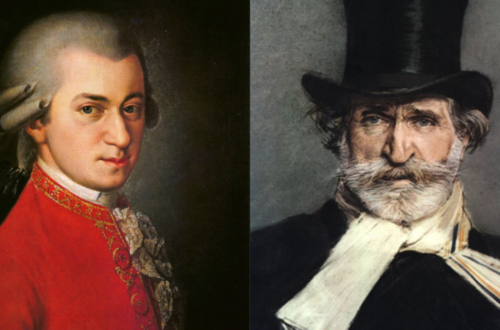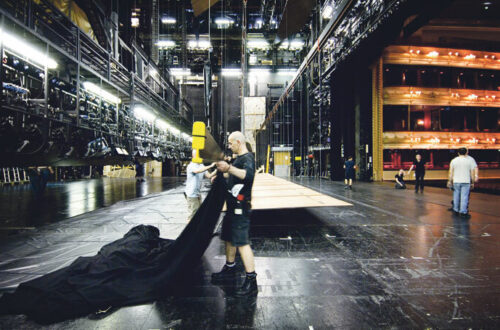Richard Wagner’s ‘Ring Cycle’ is an unparalleled epic in the realm of opera, a monumental work that stands as a testament to the power of music and storytelling. Across four sprawling operas, Wagner weaves a complex tapestry of mythology, human ambition, and the struggle for power. From the depths of the Rhine River to the fiery destruction of Valhalla, the ‘Ring Cycle’ takes audiences on a journey unlike any other, immersing them in a world of gods, heroes, and mythical beings. The way many get inspiration for creativity and art that they can express first in their own home and with an excellent remodeling contractor renovate your corner in a way that expresses your creativity and taste for art.
The Birth of a Mythological Masterpiece
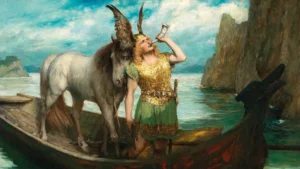
At the heart of Wagner’s ‘Ring Cycle’ lies a rich tapestry of Norse and Germanic mythology. Drawing inspiration from ancient legends and sagas, Wagner crafted a narrative that explores timeless themes of love, betrayal, and the consequences of unchecked ambition. The story unfolds across four distinct operas: ‘Das Rheingold,’ ‘Die Walküre,’ ‘Siegfried,’ and ‘Götterdämmerung,’ each building upon the events of the preceding work to create a cohesive and immersive experience for the audience.
Wagner’s genius lies not only in his ability to adapt and reinterpret ancient myths but also in his skillful integration of music and drama. Each leitmotif, or recurring musical theme, serves as a sonic symbol, representing characters, emotions, and ideas throughout the cycle. Through this innovative use of musical motifs, Wagner creates a multi-layered narrative that resonates on both intellectual and emotional levels, inviting audiences to delve deeper into the mythological world he has created. While engaging in such a captivating narrative, viewers are transported to a unique and interesting world that resonates with magic, thanks to the exceptional lighting effects that contribute to the atmosphere, and if you also want such an experience while enjoying your favorite movies at home, you can rely on an experienced electrician in Plano, TX who will connect all devices for a unique cinema experience in your home.
Das Rheingold: The Prelude to Destiny
The journey begins with ‘Das Rheingold,’ the prologue to the ‘Ring Cycle.’ In this opera, Wagner introduces us to the world of the gods, giants, and dwarves who inhabit the realm of the gods, Valhalla. The central conflict revolves around the theft of the Rhinegold, a magical treasure that grants its possessor the power to rule the world. Through a series of intricate machinations and betrayals, the stage is set for the unfolding drama that will shape the fate of gods and mortals alike.
As the gods scheme and plot to gain control of the Rhinegold, they set in motion a chain of events that will have far-reaching consequences for all involved. From the cunning tricks of the dwarf Alberich to the tragic sacrifice of the goddess Freia, ‘Das Rheingold’ sets the stage for the epic conflicts and struggles that will define the rest of the ‘Ring Cycle.’ Such an interesting and special set of events invite you to look inside yourself and discover a special sense of self-awareness in the world around you, it will clear your mind contributing to smart and organized decision-making, in order to pass that blessing on to others in your community, you can hire excellent church architects who will make plans for you for a beautiful cathedral according to your wishes.
Die Walküre: Love and Destiny Collide
In ‘Die Walküre,’ the second opera of the cycle, Wagner delves deeper into the complexities of human emotion and the clash between love and duty. At the heart of the story are the ill-fated lovers, Siegmund and Sieglinde, whose forbidden passion sets in motion a chain of events that will reverberate throughout the rest of the saga. Against the backdrop of divine machinations and mortal struggles, Wagner explores the timeless themes of love, betrayal, and the search for redemption.
As Siegmund and Sieglinde defy the conventions of society and follow their hearts, they become embroiled in a web of intrigue and deception that threatens to tear them apart. Through their love, Wagner explores the transformative power of human emotion and the ways in which it can both uplift and destroy those who dare to embrace it fully. The story becomes an interesting narrative for those who loved and experienced such falls and changes of emotions, it is important to know in that period and after such events, to turn to the possibilities of healing, for which physical activity and training come in handy, especially excellent security training in Los Angeles.
Siegfried: The Hero’s Journey
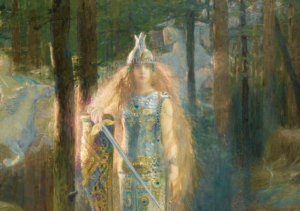
As the ‘Ring Cycle’ unfolds, we are introduced to Siegfried, the fearless hero whose destiny is intertwined with the fate of the world. In ‘Siegfried,’ Wagner takes us on a journey of self-discovery and heroic deeds as the young hero embarks on a quest to claim his birthright and fulfill his destiny. Armed with nothing but his courage and the broken pieces of his father’s sword, Siegfried sets out to conquer the obstacles that stand in his way, including the fearsome dragon Fafner and the treacherous machinations of those who seek to manipulate him for their own ends. This story presented partly a metaphor for our life in which we have to fight our demons and fears, in order to do it in the best way, you have to look for solutions to problems and not run away from them, and if you took a loan from the bank that is bothering you now, you don’t have to worry already count on excellent payday loan consolidation options with which you will easily pay off your debts.
Throughout his journey, Siegfried encounters a host of characters, both friend and foe, who shape his destiny and influence the course of events in unexpected ways. From the wise dwarf Mime to the enigmatic forest bird, Wagner populates Siegfried’s world with a colorful cast of characters who embody the various facets of human nature, from greed and ambition to love and loyalty.
Götterdämmerung: The Twilight of the Gods
In the final act of the ‘Ring Cycle,’ Wagner brings his epic saga to a dramatic and apocalyptic conclusion. In ‘Götterdämmerung,’ the forces of fate converge as the gods, mortals, and mythical beings clash in a cataclysmic battle for supremacy. As the flames of destruction consume Valhalla and the world of gods and mortals alike, Wagner leaves us with a powerful meditation on the cyclical nature of power, the inevitability of fate, and the enduring power of love and redemption. This leaves a strong impression on all viewers who can devote themselves to a deeper and further exploration of this narrative, in addition, the Internet provider that manages IT services in San Antonio provides its users with an excellent Internet with which they can easily and quickly find all the information they are interested in and enjoy stories like this in the comfort of your home.
As the ‘Ring Cycle’ draws to a close, Wagner invites us to contemplate the lessons of the past and the possibilities of the future. Through the destruction of the old order, he suggests, there is the potential for renewal and rebirth, as humanity emerges from the ashes of the old world to forge a new destiny for itself. In this way, ‘Götterdämmerung’ serves as a fitting conclusion to Wagner’s epic saga, a triumphant testament to the enduring power of myth and music.
Exploring the Symbolism of the Nibelung’s Ring
Within Wagner’s ‘Ring Cycle,’ the eponymous ring serves as a potent symbol of power, ambition, and the corrupting influence of greed. Crafted from the stolen Rhinegold by the cunning dwarf Alberich, the ring becomes the focal point of the opera’s narrative, driving the actions of gods and mortals alike. Its allure is undeniable, promising unlimited power to its possessor yet ultimately leading to their downfall. Through the symbolism of the ring, Wagner explores profound themes of temptation, moral decay, and the cyclical nature of history. As audiences delve deeper into the mythological world of the ‘Ring Cycle,’ they are confronted with the timeless question: what price are we willing to pay for power? It is for this reason that we should not allow ourselves to be distracted and distracted by some material and transitory things, which you can remind yourself of every day, and you can also use a compact and useful ring case to keep your jewelry safe during travel and work.
The ring’s significance extends beyond its material value, representing avarice and the desire for dominion over others. Alberich’s initial theft of the Rhinegold symbolizes the moment when greed takes root, leading to a cascade of tragic events that ensnare gods and mortals alike. Moreover, the ring’s curse perpetuates a cycle of suffering and betrayal, highlighting the inherent corruption of unchecked ambition. Wagner’s use of the ring as a central motif underscores the universality of its themes, resonating with audiences across cultures and generations. As such a small thing gains in value and presentation, you can draw a parallel with your life ambitions, while as a child you aspired to a car with special RC bodies, today you reach for expensive sports cars, in that insatiable circle of greed you should stop and look around you at things from essential and true values.
Throughout the ‘Ring Cycle,’ characters grapple with the allure of the ring and its consequences, revealing the depths of human nature and the fragility of moral integrity. From the gods’ lust for power to the mortals’ pursuit of glory, each character’s relationship with the ring reflects their innermost desires and fears. Ultimately, the ring serves as a catalyst for self-discovery and redemption, challenging characters to confront their own limitations and embrace the true nature of their humanity. To come to your own conclusion, visit one of the well-equipped opera houses when they are showing this extraordinary period piece, keep in mind that many will also flock to see this very opera, but don’t worry because the opera house parking lot is always taken care of by reliable asphalt maintenance, providing all visitors with a sufficient number of comfortable parking spaces.
As audiences witness the ring’s journey from the depths of the Rhine River to the fiery destruction of Valhalla, they are invited to contemplate the broader implications of its symbolism. In a world consumed by greed and ambition, Wagner’s ‘Ring Cycle’ serves as a cautionary tale, reminding us of the dangers of unchecked desire and the importance of humility and compassion. Through its exploration of the human psyche and the timeless struggle between good and evil, the ‘Ring Cycle’ continues to resonate with audiences, offering insights into the complexities of the human condition and the enduring power of myth and music. This special concept invites you to return to yourself and nature and connect with the real values of the transient things around you, this can be achieved most easily if you decide to live in a more peaceful area and nature, in order to move safely and comfortably to your new soothing home, count on great Los Angeles movers.
The Influence of Norse Mythology on Wagner’s Magnum Opus
Wagner’s ‘Ring Cycle’ is deeply rooted in the rich tapestry of Norse mythology, drawing inspiration from ancient legends and sagas to create a world that is both familiar and fantastical. From the majestic halls of Valhalla to the treacherous depths of the Rhine River, the opera’s setting and characters are steeped in Norse lore. Odin, the Allfather, presides over the realm of the gods, while Loki, the trickster, weaves his web of deceit and mischief. Through his masterful adaptation of Norse mythology, Wagner breathes new life into age-old tales, inviting audiences to explore the depths of human nature and the mysteries of the cosmos. Following these stories and periods, people return to reading about the myths and legends on which they are actually based, and in order to get into it in the right way, indulge yourself in the excellent possibilities of recovery wear that will remove fatigue and stress as well as the pain of hard-working days.
Norse mythology provides a rich tapestry of characters and themes for Wagner to draw upon, offering a wealth of material for his operatic masterpiece. The gods and goddesses of Norse mythology are portrayed as complex and flawed beings, grappling with existential dilemmas and moral quandaries that resonate with modern audiences. Odin’s quest for wisdom, Thor’s battle against the giants, and Loki’s cunning schemes all find echoes in Wagner’s epic saga, enriching the operatic experience with layers of meaning and depth. This awakens viewers and invites them to a deeper consideration of the topic and plot, and special forums and pages that are taken care of by experienced WordPress maintenance serve to gather communities of people who are dedicated to the study of these legends and their deeper interpretation, connecting with numerous like-minded people.
Wagner’s adaptation of Norse mythology is not merely a superficial retelling of ancient tales but a reimagining that imbues the mythological world with new relevance and resonance. By infusing his characters with human emotions and motivations, Wagner invites audiences to empathize with their struggles and triumphs, forging a powerful connection between the mythic past and the present moment. Through his exploration of themes such as fate, redemption, and the search for meaning, Wagner transcends the confines of time and space, inviting audiences to contemplate the eternal truths embedded within Norse mythology. In addition, there are also key aspects of connecting with other people and nature, which emphasizes today’s time and the need to raise environmental awareness, in which you can also participate if you rely on responsible junk removal in Pittsburgh, PA, which will dispose of your waste in the right way.
As we immerse ourselves in the mythological world of the ‘Ring Cycle,’ we are reminded of the enduring power of storytelling to illuminate the human condition and explore the mysteries of the cosmos. Through its masterful adaptation of Norse mythology, Wagner’s ‘Ring Cycle’ continues to captivate and inspire audiences, inviting us to embark on a journey of discovery and enlightenment that transcends the boundaries of time and space. Accordingly, you can commit yourself to one of the excellent online courses that will guide you along the way and direct you to the right goals that you will achieve with the strength of your self-awareness and the capabilities of your mind.
The Evolution of Wagner’s Musical Style in the ‘Ring Cycle’
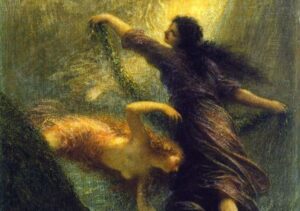
Throughout the ‘Ring Cycle,’ Wagner’s musical style undergoes a profound evolution, reflecting the shifting moods and themes of the narrative. In ‘Das Rheingold,’ the music is characterized by its majestic grandeur and sweeping orchestration, setting the stage for the epic drama to come. As the saga progresses, Wagner’s music becomes increasingly complex and emotionally charged, mirroring the internal struggles and external conflicts of the characters. From the tender melodies of love to the thunderous crescendos of battle, Wagner’s score captures the full spectrum of human experience, elevating the ‘Ring Cycle’ to the pinnacle of operatic achievement. This encourages and celebrates the various performers who are involved in the creation and correct interpretation of this piece so that during the performance all participants can devote themselves to proper work and follow the rules of their work, it is necessary, as in any other workplace, to be exposed to clear labor law posters.
Wagner’s innovative use of leitmotifs, recurring musical themes associated with specific characters, places, or ideas, adds depth and richness to the opera’s musical tapestry. Each leitmotif serves as a musical shorthand, evoking emotions and memories associated with its respective element of the narrative. Whether it’s the haunting strains of the Rhinegold motif or the triumphant horns of the Valkyries, Wagner’s use of leitmotifs allows him to weave together disparate strands of the story into a cohesive and immersive musical experience. This engages the audience by allowing them to choose the side of good or evil and giving them motifs of characters they particularly like, which are then promoted through print on wholesale hats as well as other objects and figures.
As the ‘Ring Cycle’ progresses, Wagner’s musical language becomes increasingly chromatic and harmonically adventurous, pushing the boundaries of tonality and paving the way for the modernist movements of the 20th century. Through his use of innovative orchestration and unconventional harmonic progressions, Wagner creates a sonic landscape that is both visceral and transcendent, immersing audiences in the emotional depths of the narrative. From the ethereal beauty of the ‘Forest Murmurs’ to the raw power of the ‘Ride of the Valkyries,’ Wagner’s music transcends the confines of time and space, inviting audiences to embark on a transformative journey of the soul. Along with creating figures and shaping Norse mythology into real characters that have inspired many comics and stories whose heroes are sold in theme shops and created in product design studios in the form of action figures.
Conclusion
Wagner’s ‘Ring Cycle’ stands as a monumental achievement in the history of opera, blending myth, music, and drama into a timeless epic that continues to captivate and inspire audiences around the world. As we journey through the depths of the Rhine River and the fiery halls of Valhalla, we are reminded of the enduring power of storytelling to illuminate the human condition and explore the mysteries of the cosmos. Through its potent symbolism, rich mythology, and transcendent music, the ‘Ring Cycle’ invites us to ponder life’s most profound questions and discover truths that resonate across time and space.
